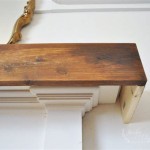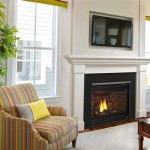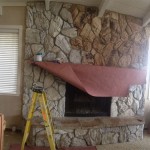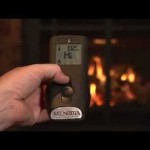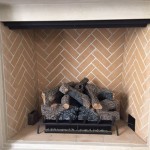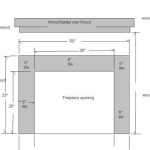Gas Fireplace Guards: Safety and Style Considerations
Gas fireplaces offer a convenient and aesthetically pleasing way to heat a home. However, the open flame inherent in these appliances presents a potential safety hazard, particularly for young children and pets. Gas fireplace guards serve as a crucial barrier, mitigating the risk of burns and accidental contact with the hot glass or flames. This article will explore the importance of gas fireplace guards, discuss the various types available, and outline the factors to consider when selecting the most appropriate guard for a particular fireplace and household.
The primary function of a gas fireplace guard is to prevent direct contact with the hot surfaces of the fireplace. These surfaces, including the glass front and surrounding metal components, can reach temperatures high enough to cause severe burns within seconds of contact. Children, who are naturally curious and less aware of potential dangers, are particularly vulnerable. Similarly, pets may unintentionally brush against the hot surface, leading to burns or discomfort.
Beyond preventing burns, fireplace guards also offer a degree of protection against accidental ignition of nearby combustible materials. While gas fireplaces are designed with safety features to minimize the risk of fire, a misplaced rug, toy, or piece of furniture too close to the fireplace could potentially ignite if it comes into direct contact with the flames or hot surfaces. A guard helps maintain a safe distance between the fireplace and surrounding objects.
The Necessity of Fireplace Guards: Prioritizing Safety
The need for a fireplace guard is not merely a matter of preference; it is often a critical safety measure, especially in households with young children, elderly individuals, or pets. The potential consequences of accidental contact with a hot fireplace are significant, ranging from minor burns to severe, life-altering injuries. Furthermore, the emotional distress and psychological impact on both the victim and their family can be considerable.
Young children are naturally drawn to bright lights and moving objects, making a gas fireplace an irresistible attraction. Their limited understanding of danger and their tendency to explore their surroundings through touch increase their risk of accidental burns. Similarly, elderly individuals may have reduced mobility or sensory perception, making them more susceptible to falls or accidental contact with the fireplace.
Pets, especially curious cats and playful dogs, may not fully comprehend the dangers associated with a gas fireplace. They may attempt to jump onto the mantel, investigate the flames, or simply brush against the hot surface while moving around the room. A fireplace guard provides a physical barrier that prevents these potentially dangerous interactions.
The presence of a fireplace guard demonstrates a responsible approach to home safety. It provides peace of mind for homeowners, knowing that they have taken proactive steps to protect their loved ones from potential harm. In many jurisdictions, the use of fireplace guards is recommended or even required by building codes, particularly in rental properties or homes with vulnerable occupants.
Moreover, the cost of a fireplace guard is relatively low compared to the potential medical expenses and long-term consequences associated with burn injuries. A small investment in a quality guard can provide significant protection and prevent a potentially devastating accident. Considering the physical, emotional, and financial costs of burn injuries, the importance of a fireplace guard cannot be overstated.
Types of Gas Fireplace Guards: Choosing the Right Option
The market offers a wide variety of gas fireplace guards, each designed with specific features and functionalities to suit different fireplace styles, room aesthetics, and safety requirements. Understanding the different types of guards available is crucial for selecting the most appropriate option for a particular situation. The following are some of the most common types of gas fireplace guards:
Freestanding Fireplace Guards: These guards are designed to stand independently in front of the fireplace, providing a barrier without requiring any permanent attachment. They typically consist of a sturdy frame with a mesh or metal screen that prevents access to the flames and hot surfaces. Freestanding guards are often foldable or adjustable, allowing them to be easily moved or stored when not needed. They are a versatile option suitable for various fireplace sizes and styles.
Mounted Fireplace Guards: These guards are designed to be securely attached to the fireplace surround or the adjacent wall. They offer a more permanent and stable barrier compared to freestanding guards. Mounted guards are available in various styles and sizes, and they can be customized to fit specific fireplace dimensions and design preferences. They are particularly suitable for households with young children or pets, where a more secure and tamper-resistant guard is desirable.
Hearth Gates: Hearth gates are similar to baby gates and are designed to enclose the entire fireplace hearth area. They provide a larger barrier that prevents access not only to the fireplace itself but also to the surrounding hearth. Hearth gates are particularly useful for households with crawling infants or toddlers who are likely to explore the entire area around the fireplace. They offer a comprehensive safety solution by creating a safe zone around the fireplace.
Glass Fireplace Doors: While not technically a "guard," glass fireplace doors offer a measure of protection by enclosing the fireplace opening. They prevent direct contact with the flames and reduce the risk of sparks or embers escaping into the room. However, it is important to note that glass fireplace doors can still become very hot during operation and may not provide sufficient protection for young children or pets. It is generally recommended to use a separate fireplace guard in conjunction with glass doors for optimal safety.
In addition to these common types, there are also specialized fireplace guards designed for specific fireplace models or unique safety requirements. Some guards feature adjustable height or width, while others are equipped with locking mechanisms to prevent unauthorized access. When choosing a fireplace guard, it is important to consider the specific needs of the household and the characteristics of the fireplace.
Key Considerations When Selecting a Fireplace Guard
Selecting the right gas fireplace guard involves careful consideration of several factors, including the size and style of the fireplace, the age and activity level of household members, and the overall aesthetic of the room. A well-chosen guard should provide adequate safety without compromising the visual appeal of the fireplace. The following are some key considerations to keep in mind:
Size and Fit: The fireplace guard should be appropriately sized to fit the fireplace opening and provide adequate coverage. The guard should extend beyond the sides and top of the fireplace to prevent access from any angle. It is important to measure the fireplace dimensions accurately before selecting a guard to ensure a proper fit. A guard that is too small will not provide sufficient protection, while a guard that is too large may be cumbersome or visually unappealing.
Material and Construction: The fireplace guard should be constructed of durable, heat-resistant materials that can withstand the high temperatures of the fireplace. Common materials include metal mesh, wrought iron, and tempered glass. The guard should be sturdy and well-constructed to prevent tipping or collapsing. The finish should be non-toxic and resistant to rust or corrosion. A guard made of high-quality materials will provide long-lasting protection and maintain its appearance over time.
Safety Features: The fireplace guard should incorporate features that enhance its safety and prevent unauthorized access. These features may include locking mechanisms, rounded edges, and fine mesh screens that prevent small fingers from reaching through. The guard should be designed to prevent children or pets from climbing on it or knocking it over. Some guards also feature heat sensors that alert homeowners when the guard becomes too hot to touch. These safety features provide an extra layer of protection and peace of mind.
Style and Aesthetics: While safety is the primary concern, the fireplace guard should also complement the style and aesthetics of the room. Guards are available in a wide range of designs, from simple and functional to ornate and decorative. Choose a guard that blends seamlessly with the existing décor and enhances the overall visual appeal of the fireplace. Consider the color, finish, and design elements of the guard to ensure that it complements the surrounding furniture and architectural features.
Ease of Use: The fireplace guard should be easy to install, operate, and maintain. Freestanding guards should be easily movable, while mounted guards should be securely attached to the fireplace surround or wall. The guard should be easy to clean and maintain, and any moving parts should operate smoothly and reliably. Consider the ease of accessing the fireplace for cleaning or maintenance purposes when selecting a guard. A user-friendly guard will make fireplace operation safer and more convenient.
Compliance with Safety Standards: Ensure that the fireplace guard meets applicable safety standards and regulations. Look for guards that are certified by recognized testing organizations, such as the American Society for Testing and Materials (ASTM) or the Consumer Product Safety Commission (CPSC). These certifications indicate that the guard has been tested and found to meet specific safety requirements. Choosing a certified guard provides assurance that it will perform as intended and provide adequate protection.
By carefully considering these factors, homeowners can select a gas fireplace guard that provides optimal safety, enhances the aesthetics of the room, and meets their specific needs and preferences. A well-chosen guard is an essential investment in home safety and provides peace of mind for homeowners and their families.

Homcom 3 Panel Folding Fireplace Screen With Magnetic Doors And Fire Place Tools Set Home Steel Spark Guard Brush 820 232 The Depot

Best Fireplace Screens Top 6 Reviews Comparisons

Pleasant Hearth Black Steel 1 Panel Fireplace Screen Fa342s The Home Depot

Private Brand Unbranded 50 In Black Steel Kempston Park 3 Panel Fireplace Screen With Doors 51103 The Home Depot

Plow Hearth Small Mountain Cabin Fireplace Fire Screen With Door In Black Com

Barrier Screens Mean Safety As Fireplace Interest Heats Up Builder

Large Crest Flat Guard Fireplace Screen Black Plow Hearth

Chesneys Usa Are Fireplace Screens Necessary

Small Cast Iron Scrollwork Fire Screen With Doors Black Plow Hearth

Doors And Screens The Hearth
Related Posts

